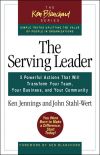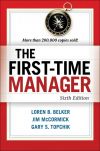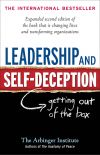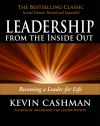Правообладателям!
Представленный фрагмент книги размещен по согласованию с распространителем легального контента ООО "ЛитРес" (не более 20% исходного текста). Если вы считаете, что размещение материала нарушает ваши или чьи-либо права, то сообщите нам об этом.Читателям!
Оплатили, но не знаете что делать дальше?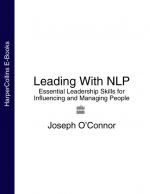
Текст бизнес-книги "Leading With NLP: Essential Leadership Skills for Influencing and Managing People"
Автор книги: Joseph O’Connor
Раздел: Жанр неизвестен
Текущая страница: 1 (всего у книги 1 страниц)
LEADING WITH NLP
ESSENTIAL LEADERSHIP SKILLS FOR
INFLUENCING AND MANAGING PEOPLE
Joseph O’Connor

Table of Contents
Cover
Title Page
INTRODUCTION: THE LEADER’S JOURNEY
1 STARTING THE JOURNEY
first steps
vision
sharing your vision
leaders in perspective
2 LEADERSHIP SUBSTANCE, STYLE AND SHADOW
the three pillars of leadership
leadership style
the shadow side
pacing and leading
your leadership credentials
3 VISION AND VALUES
values
organizational vision
4 ON THE ROAD
motivation
rewards and penalties
values and integrity
signposts to the future
reluctance
the dark side of change
5 GUIDES AND RULES OF THE ROAD
mentors
unpacking skills
leaders and losers
balancing task and relationship
the rules of the road
roman law and common law
learning
solutions and resolutions
organizational learning
6 GAMES AND GUARDIANS
rules, laws and boundaries
trust
the prisoner’s dilemma
games and meta games
beliefs and assumptions
the channel of experience
7 CHANGE AND CHALLENGE
systems thinking
perspectives
cause and effect
thinking in circles
boundaries and horizons
blame and responsibility
change and balance
scylla and charybdis
the edge of chaos
the power law
8 CONCLUSION
RESOURCES
training and consultancy
Bibliography
Index
Acknowledgements
About the Author
Also by the Author
Copyright
About the Publisher
INTRODUCTION: THE LEADER’S JOURNEY
Two people died in the same week in August 1997, Princess Diana in Paris and Mother Teresa in Calcutta. They could hardly have been more different on the surface. Princess Diana was rich, famous, beautiful and controversial. Mother Teresa was an elderly Albanian nun who slept on a hard bed and worked with the poor and sick on the streets of Calcutta. Yet both touched people’s hearts; they were loved and respected as well as being international figures. They were leaders. When they died, people who had never met them mourned them. Why?
Because both were not perfect icons but real people with human frailties that others could identify with. They were like us, yet they expressed something of the best in us – something of what we are and could be. These two people were in the public eye, like many others we regard as leaders – politicians, artists, musicians and businessmen – but leadership is more than a job description. Leadership is a way of acting and a way of being that we all can have, not something ‘out there’, something for other, famous people. At every level leaders have the ability to help people, express their hopes and carry their fears. I would like this book to demystify leadership, taking it down from its high pedestal and making it a natural part of life.
In the past, leaders were the rich, the powerful and the famous, great kings, warlords, scientists and thinkers, outstanding artists or craftsmen, or giants of commerce. Literature and history hold them up as examples and it seems we can only aspire to be pale copies. Over the twentieth century there has been a profound democratization in almost every aspect of human life, except leadership. At first sight this seems to make sense – after all, we can’t all be leaders, can we? No. Not if we continue to accept a narrow definition of leadership based on power, high profile and wide authority.
Let us reclaim leadership to its original meaning: taking a path or going on a journey. Leadership is the journey itself, the activity, not the destination – a stimulating and fulfilling journey where planning and preparation are also important and enjoyable in their own right.
I see leadership skills as the most important resource we have to develop to deal with the capricious times in which we live. That we live in times of rapid change is a truism – we have to adapt to the sort of breakneck changes in one lifetime that previously would have taken generations. In the world of business, markets and strategies change fast. We are on a high-technology carousel that never seems to slow down. The carousel spins with bewildering speed as we strive to deal with the present and shape the future but with systems and organizations designed to cope with the past. We have more information, but knowledge – information that matters and makes a difference – is as hard as ever to acquire. We take a sieve to the torrent of information that drenches us every day and hope to catch something of value.
How can we pin down leadership, one of the most talked about and written about subjects in business? Is it charisma? Influence? Inspiration? Stewardship? Yes. It may be. Because the reason you set out on your journey, your chosen destination, who you travel with and how you travel may all vary. That’s what is so infuriating and valuable about leadership. There are many roads, many destinations and many ways to travel.
So why learn to be a leader? To be involved in what really matters to you. To be able to do what inspires and moves you. To have companions on your journey. In any area where you want more influence you must be a leader.
Leadership has a paradox at its centre – while greatly prized, you cannot grab it for yourself directly. It is a gift which can only be given by others. Being a leader has no meaning without others who choose to travel with you. A leader all alone is like the sound of one hand clapping.
So this book represents a journey in three senses. First it has travellers’ tales from leaders on their path. What was it like for them? What did they find? Where are the pitfalls and the dragons on the path? What essential travel equipment do we need? These tales come from all over the world. Secondly, this book is a practical tour guide for you to prepare in your imagination what you want to do in reality. Thirdly, this book is itself a journey. I have a plan and a vision of what it will be about and what it will do. I have my map, but the writing has a momentum and direction of its own and right now I do not know exactly what route we will take. I know where we need to arrive, but there are many fascinating sights to see, sounds to hear and places to explore on the way. We do not know what exactly we shall find in them and there may be some unscheduled stops on the way.
This is a personal view of leadership. For me, three areas of leadership stand out: self–development, influencing and communication skills, and systemic thinking.
First, being a leader means developing yourself. You need to be strong and resourceful in order to make the journey. As you become a leader, you find resources in yourself you did not know you had. You become more yourself, because a leader’s greatest influence comes from who they are, what they do and the example they set. Secondly, a leader inspires others to join them on the road, so leadership involves communication and influencing skills. Otherwise you are a lone traveller, not a leader. Thirdly, a leader must look towards their destination, as well as paying attention to where they have been and where they are. Without such a road map, however strong they may be and however many companions they may have, they may get lost down a cul-de-sac or stuck in a swamp. A leader needs to understand the system they are part of, to see beyond the obvious, beyond the immediate situation, to sense how events connect to deeper patterns. So leadership is a combination of who you are, the skills and talents you have, and your understanding of the situation or the context you are in. While these elements are universal, you will put the pieces together in a way unique to you.
You can use this book in any area of your life where you want the benefits of being a leader. I will concentrate, however, on business examples because leadership is so important in business and business holds so many opportunities to be a leader.
Leadership is no easy ‘faddish’ package that you can hand out as part of a corporate restructure to solve all your problems. It needs work; you need to develop the ability to respond to challenge as well as deal with the specific challenges that arise in the course of your business. I want to look at leadership from the inside as well as the outside. What are the most useful ways to think about managing a business? What skills are needed? Leadership holds some answers to these questions.
The Management Agenda, a report published by the Roffey Park Management Institute in 1998, contained the replies of a sample of managers to questions on work issues. Many were critical of senior managers for lacking leadership. At the same time, they said that they themselves were expected to be leaders, yet they had no training on what this involved or how to adjust to this new identity. There seems to be a need for leadership in business and at the same time a vacuum about what this means in practice and how to make the change.
Leadership is part of, and the result of, the great changes in management practice in the last 20 years. It replaces the old ‘command and control’ model of running an organization. ‘Command and control’, based on a military mentality, was appropriate in a different social climate and a stable business environment. Now this stability has gone, a casualty of a frenetic pace of change, new values of self-esteem and individual responsibility and a business culture that values employability above employment. In most business organizations, particularly in the Western world, we just do not obey orders any more – at least not without good reason. But leaders are still needed, both to guide the organization and to develop others as leaders.
Leadership is not a quality that can be rationed or controlled; rather, it is based on purpose, vision and values: purpose to set the destination, vision to see where you are going and values to guide you on the way towards a successful and sustainable future.
When I think of how organizational leadership could be, I think of the flight of a flock of birds. I watched a flock of starlings swoop over the horse chestnut trees close to where I live a few days ago. The birds moved together in beautiful and intricate patterns, moving away and then sweeping back, describing a sort of figure of eight, but no pass was quite like any other. How did they do it? There were one or more birds at the front, but they were not issuing orders to the others, telling them exactly how to move so they all stayed together. The leader (if the one at the front was the leader) was different every time they passed over my head. Yet somehow they not only flew together, but also kept in formation. They could adjust in a split second to keep the pattern, but the pattern was never identical from moment to moment. How did they stay together in that marvellous formation like liquid rolling through the air? How do starlings organize themselves, keeping their individuality and yet being part of a wider coherent group? There seems to be an intelligence that emerges from the group, coming from the intelligence of each member, yet larger than that possessed by any individual.
Leaders face the organizational challenge of creating the context where that larger intelligence can emerge without diminishing the individuals in any way. The more the individuals use their own intelligence to the full for themselves, the smarter the group becomes. This is the puzzle and the challenge of how individual and organizational learning work together. So, here is the secret of organizational leadership. How do you develop each person as a leader and get them all to fly in formation?
What resources do we have to help us achieve this? Neuro-Linguistic Programming (NLP) is a broad field that began in the mid-1970s modelling excellent communicators – finding out how they did what they did so well. NLP models how we do what we do. In essence it studies the structure of subjective experience – how we create our own unique internal world from what we see, hear and feel, and how in turn our mental world shapes what we allow ourselves to see, hear and feel. NLP has modelled top people in every field – managers, salespeople, teachers and trainers – in order to teach others these skills, so they do not have to reinvent the wheel. It has a wealth of material from leaders – how they think and what they believe.
NLP is made up of three parts:
‘Neuro’ is our neurology – how we think and feel.
‘Linguistic’ is the language part – what we say, how we say it and how we are influenced by what we hear.
‘Programming’ is how we act to achieve our results.
NLP helps us to understand what leaders do and how they get their results, so you can take those parts that suit you and that fit in with your values and beliefs. You don’t copy them, you learn from them to achieve your goals. Whatever skills you have, NLP can help you make more of them. It also gives practical ways of developing those skills, not an intellectual appreciation of how nice the skills would be to have or how great they are in other people. NLP is a valuable guide on the leader’s journey.
Our second guide on the journey is systemic thinking – thinking in terms of feedback and relationships, seeing patterns, not isolated events. Leaders have to understand the system they are in, and systems do not operate logically, small changes can produce large effects and these need not occur in the same place or at the same time as the cause. Straight-line cause and effect thinking does not work in business organizations, because they are complex systems. There may be many effects from just one change. Also, what you do to solve a problem may actually perpetuate it, or even make it worse in the long run. But when you think systemically, you think past the obvious to the dynamic patterns that generate a problem.
A third resource is the insights from the discipline of complexity science. Complexity is the application of systems thinking to complex systems (like business organizations) that behave in complicated ways. Recent research has given us some fascinating insights into complex systems that we can tentatively apply to business. For example, a few simple rules can generate very complex behaviour. What are the rules that hold the flock of birds together and how might those rules map over into creating a prosperous and successful organization? We can make some interesting speculations. Also, there seems to be an optimum point for a business – between the indolence of too much deadening procedure and the chaos of too much change. Too much order and the business becomes inflexible, too rigid to react quickly enough to the demands of the external market or the demands of the people within it. Too much freedom and the organization does not work either: rules change too quickly and people become disoriented and confused. People can learn best at the delicately poised point of balance between the two extremes. How can an organization get to this ‘edge of chaos’ with enough creativity to adapt to change, but within a structure stable enough to operate effectively? Getting to this edge is one of the main tasks of an organizational leader.
Finally, complex systems are not predictable. In theory they may be, but as the old saying goes, ‘In theory there shouldn’t be a difference between theory and practice, but in practice, there always is.’ Complete control is impossible, and even if it were, it would be the kiss of death. There is no book, method or consultant that can tell you how to push the river (although many claim credit that it is their pushing that causes the river to move). But that does not mean you are helpless. Quite the opposite. It is a tremendous relief to admit that you cannot predict and therefore cannot entirely control a complex organization. You can give up trying. Now you can start to see how the organization really works and allow it to organize itself in the best way. This is a leader’s work.
NLP explores how people think and the results they get. Complexity and systems thinking explore the organizations they create as they work together. These ideas are fascinating and practical – which is why I write about them. Together they are the basis of our map.
Organizations are fond of saying that the quality of the people who work in them gives them their competitive edge. At the risk of being heretical, I doubt this very much. Every organization has excellent people of high quality. The leaders make the difference. They determine the quality of the experience of working in that business, they weave that indefinable, yet very important fabric – the organizational culture. At the same time, I believe everyone in an organization can be a leader in some way. I hope this book is a step towards making this possible and real.
How to Use This Book
My goal in this book is to weave the three strands of leadership into a thread to guide you through the twists and turns of the leader’s path. There are suggestions and exercises to develop yourself as a leader, to influence others in any situation where you are called on to lead, and to learn systemic thinking skills and apply them in a professional business context.
There are seven sections:
The first begins the journey. It starts with your vision – why be a leader? What does it mean?
The second section deals with different types of leaders and styles of leadership, explaining how when, where and why they are useful.
The third section starts to move away from the present and looks at vision, values and purpose, both organizational and individual.
The fourth looks at motivation and how to build it, also the dark side of leadership, the difficulties and obstacles.
The fifth deals with resources on the journey– the maps, guides and rules of the road.
The sixth looks at the guardians you will meet on the way and how to overcome them, how to build trust and be trust-worthy.
The guardians are not only external difficulties such as resistance from other people and organizational inertia, but also your own internal resistances and blocks.
The seventh section is about the skills and responsibilities you face as a leader and how you might get a business to fly in formation.
The last section is about passing on the skills you have learned to others through coaching and mentoring. It also has a summary of the principles of leadership.
There is also a resource section at the end with a bibliography.
Use this book to form your leadership skills, to develop yourself and others. Use it to stimulate ideas for dealing with management problems.
However, this book alone won’t make you a leader. I have a friend who is a fitness fanatic. He buys all the magazines, is a member of a well-equipped gym and has an exercise bicycle in his bedroom. Yet the only exercise he gets is when he lifts the piles of health and fitness magazines from bedside table to bookcase. He tells me he really will do some exercise – but he just does not have time right now. And he always seems to have something more important to do. He wants the health and well-being that exercise will bring him, but without doing the work.
Bearing this in mind, if you are ready, I invite you to step out on the first stage of the leader’s journey.
Внимание! Это ознакомительный фрагмент книги.
Если начало книги вам понравилось, то полную версию можно приобрести у нашего партнёра - распространителя легального контента ООО "ЛитРес".Правообладателям!
Представленный фрагмент книги размещен по согласованию с распространителем легального контента ООО "ЛитРес" (не более 20% исходного текста). Если вы считаете, что размещение материала нарушает ваши или чьи-либо права, то сообщите нам об этом.Читателям!
Оплатили, но не знаете что делать дальше?

